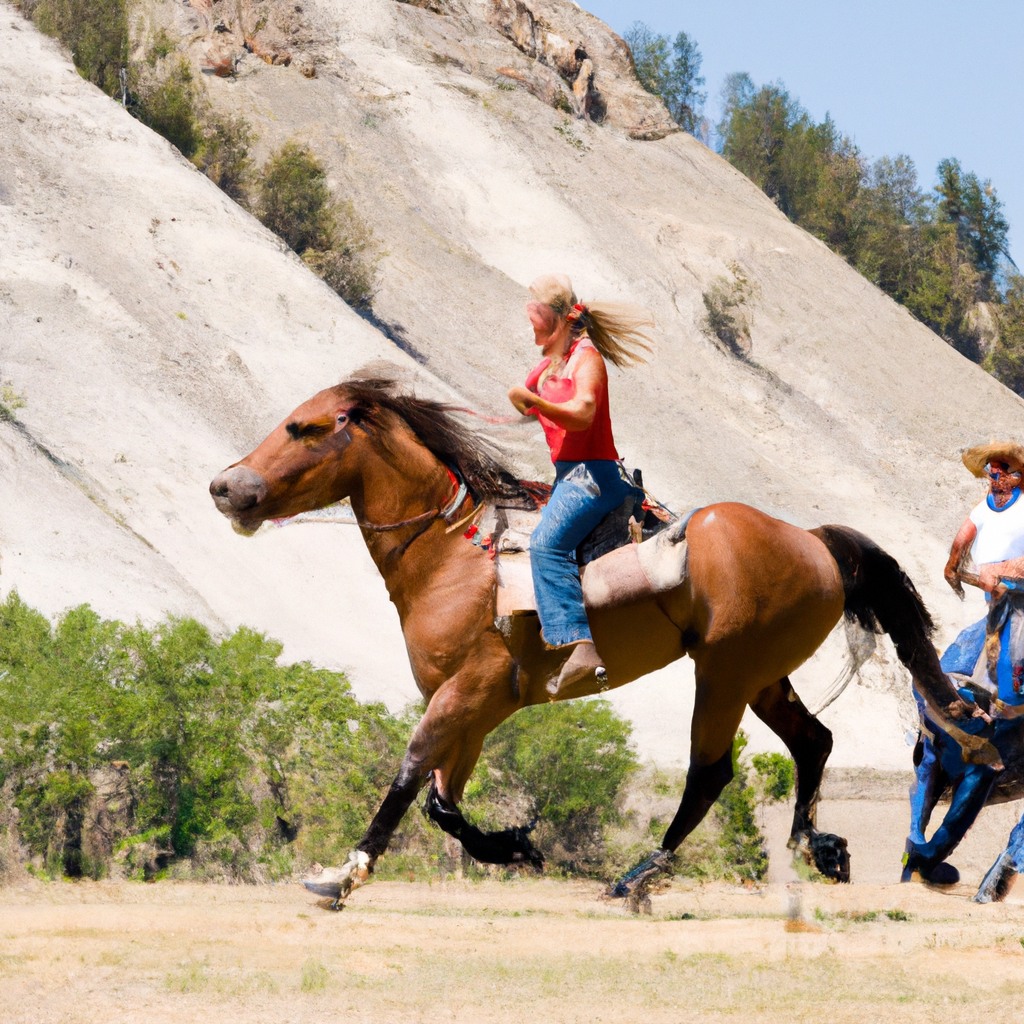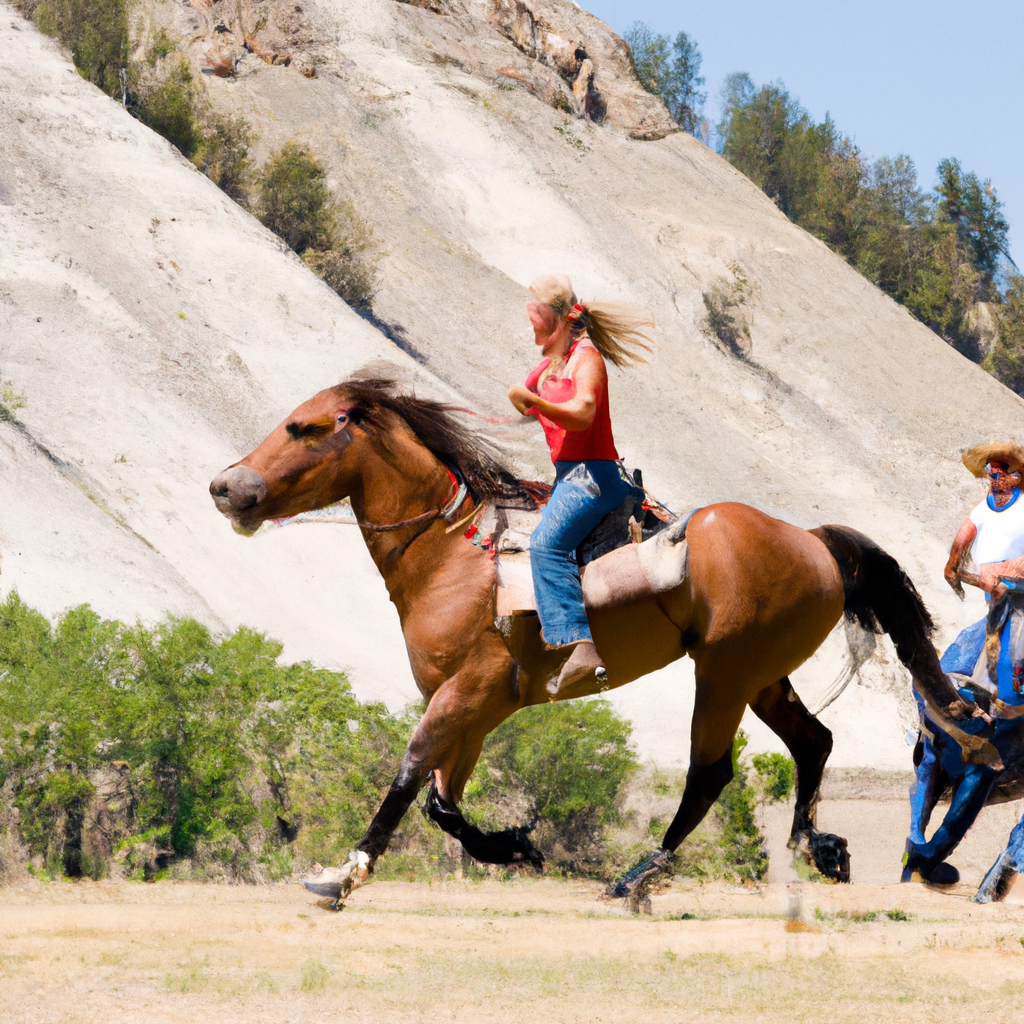If you’re an avid horseback rider, you know that sometimes riding in challenging conditions can be both thrilling and nerve-wracking. Whether you’re facing extreme weather, rough terrain, or unfamiliar trails, it’s important to be prepared and know how to handle these situations. In this article, we’ll share some valuable tips to help you navigate through challenging conditions while still enjoying your ride. So saddle up and get ready to learn how to conquer any obstacle that comes your way!
Tips for Horseback Riding in Challenging Conditions
Horseback riding can be an exhilarating and rewarding activity, but challenging conditions can test even the most experienced riders. Whether you’re riding on steep terrain, navigating slippery ground, or facing extreme weather, it’s important to be prepared and have the right skills and equipment to handle the situation. In this article, we will provide you with a comprehensive guide to horseback riding in challenging conditions, covering everything from essential gear to advanced training techniques. So let’s dive in and explore some valuable tips that will help you overcome any obstacles you may encounter on your rides.
1. Essential Gear for Challenging Conditions
When it comes to horseback riding in challenging conditions, having the right gear is crucial for both your safety and the comfort of your horse. Let’s take a look at some of the essential equipment you should have in order to ride confidently in challenging terrain and weather.
1.1 Proper Footwear for Challenging Terrain
Wearing appropriate footwear is essential when riding in challenging terrain. Invest in a pair of sturdy riding boots with a good tread to provide you with the necessary grip and stability. Make sure the boots have a low heel to prevent your foot from slipping through the stirrup and getting caught.
1.2 Appropriate Clothing for Challenging Weather
Dress for the weather conditions you’ll be riding in. Layer your clothing to accommodate changing temperatures and bring a waterproof jacket in case of rain. Opt for comfortable and stretchy pants that allow for ease of movement, and avoid loose or baggy clothing that could get caught on branches or other objects.
1.3 Protective Helmets and Safety Equipment
Always wear a properly fitted helmet when horseback riding, regardless of the conditions. Helmets are essential for protecting your head in case of a fall or accident. Additionally, consider wearing protective equipment such as knee and elbow pads to reduce the risk of injury in challenging conditions.
2. Preparing Yourself and Your Horse
Before heading out into challenging conditions, it’s important to evaluate your own riding skills and your horse’s fitness and readiness. Taking the time to warm up both yourself and your horse can also greatly contribute to a successful ride.
2.1 Assessing Your Riding Skills and Abilities
Be honest with yourself about your riding skills and abilities. If you’re not confident in your ability to handle challenging conditions, consider taking lessons or seeking guidance from a more experienced rider. Knowing your limits and continuously working on improving your skills can make all the difference in challenging situations.
2.2 Evaluating Your Horse’s Fitness and Readiness
Just like you, your horse also needs to be physically prepared for riding in challenging conditions. Make sure your horse is in good health and condition before embarking on a challenging ride. Regular exercise, proper nutrition, and regular veterinary check-ups are key to maintaining your horse’s fitness.
2.3 Warm-up Exercises for Both Horse and Rider
Before starting your ride, engage in warm-up exercises to loosen up your muscles and prepare your horse for physical exertion. Stretching exercises, lunging, and light riding exercises can help both you and your horse warm up and prevent injuries in challenging conditions.

3. Techniques for Riding in Challenging Terrain
When it comes to riding in challenging terrain, proper technique is essential. Let’s explore some techniques that will help you maintain balance and stability, and effectively communicate with your horse in challenging conditions.
3.1 Adjusting Your Seat and Position
Maintaining the correct seat and position is crucial when riding in challenging terrain. Distribute your weight evenly and maintain a balanced seat to provide stability for both you and your horse. Use your core muscles to stay centered and avoid leaning too far forward or backward.
3.2 Maintaining a Balanced and Stable Riding Style
In challenging terrain, it’s important to maintain a balanced and stable riding style to prevent accidents and maintain control over your horse. Keep your lower body relaxed and absorb the movement of your horse by flexing your joints. This will help you maintain your balance and stay in control.
3.3 Proper Use of Reins and Leg Aids
Effective communication with your horse is essential in challenging conditions. Proper use of reins and leg aids will help you guide your horse and convey your intentions. Practice using subtle and clear cues to communicate with your horse and develop a harmonious partnership.
4. Riding Strategies for Various Challenging Conditions
Different challenging conditions require different riding strategies. Let’s explore some specific techniques for riding in steep or mountainous terrain, slippery or muddy ground, and extreme weather conditions.
4.1 Riding in Steep or Mountainous Terrain
Riding in steep or mountainous terrain presents unique challenges that require specific techniques to ensure your safety and the well-being of your horse.
4.1.1 Balancing and Shifting Weight on Uphill and Downhill
When riding uphill, maintain a forward position and shift your weight slightly forward to help your horse maintain balance and distribute the weight evenly. When riding downhill, sit deeper in the saddle and lean slightly backward to prevent your horse from stumbling.
4.1.2 Navigating Narrow Trails and Switchbacks
Navigating narrow trails and switchbacks requires focus and precision. Give your horse enough space to safely maneuver, and use your cues to guide them through tight spaces. Take your time and remain calm to ensure a smooth and safe ride.
4.2 Riding in Slippery or Muddy Ground
Slippery or muddy ground can be challenging to navigate, but with the appropriate techniques, you can minimize the risk of accidents and keep both you and your horse safe.
4.2.1 Selecting the Right Path and Avoiding Hazardous Areas
Survey the ground ahead and choose the path with the best footing. Avoid areas that appear to be excessively muddy or slippery, and be aware of potential hazards such as loose rocks or fallen branches.
4.2.2 Applying Correct Techniques to Prevent Slipping
To prevent slipping, maintain a slow and controlled pace, distributing your weight evenly on your horse. Give your horse enough time to adjust their footing and use leg aids for additional support. Staying calm and relaxed will also help your horse navigate challenging ground safely.
4.3 Riding in Extreme Weather Conditions
Riding in extreme weather conditions, such as strong winds, limited visibility, heat, cold, or wet weather, requires extra precautions to ensure the safety and well-being of both you and your horse.
4.3.1 Dealing with Strong Winds and Limited Visibility
In strong winds, maintain a low profile by leaning into the wind and keeping your body close to your horse’s neck. When visibility is limited due to fog or heavy rain, slow down and focus on maintaining a clear line of communication with your horse.
4.3.2 Managing Heat, Cold, and Wet Weather Challenges
In extreme heat, take regular breaks in shaded areas and provide your horse with plenty of water to prevent dehydration. In cold weather, dress in layers to regulate your body temperature and protect yourself from the elements. Wet weather can make the ground slippery, so adjust your pace and use caution when riding in these conditions.

5. Building Confidence and Trust in Challenging Situations
Building confidence and trust in challenging situations is crucial for both you and your horse. Let’s explore some techniques to develop effective communication, build trust through consistent training, and gradually increase difficulty to build confidence.
5.1 Developing Good Communication with Your Horse
Establishing clear and effective communication with your horse is key to navigating challenging situations. Practice using consistent cues and reward your horse when they respond correctly. By building a strong bond with your horse, you’ll be able to trust each other in challenging conditions.
5.2 Building Trust through Consistent Training
Consistent training helps build trust between you and your horse. Work on developing a solid foundation of basic skills and gradually introduce new challenges as you both progress. Rewarding your horse’s efforts and providing positive reinforcement will help boost their confidence and trust in you as their rider.
5.3 Gradually Increasing Difficulty to Build Confidence
Gradually increasing the difficulty of your rides is essential to build confidence in challenging situations. Start with easier terrain and gradually progress to more challenging environments. By taking small steps and continuously challenging yourself and your horse, you’ll build confidence and develop the necessary skills to handle even the most challenging conditions.
6. Safety Precautions for Challenging Riding
Safety should always be a top priority when riding in challenging conditions. Let’s explore some safety precautions, including riding with a companion or in a group, ensuring proper tack and equipment maintenance, and carrying a first aid kit and emergency contact information.
6.1 Riding with a Companion or in a Group
Riding with a companion or in a group is always a safer option, especially in challenging conditions. Having someone with you provides an extra set of eyes and helps in case of emergencies. If possible, ride with someone who is more experienced and familiar with the type of terrain or weather you’ll be facing.
6.2 Ensuring Proper Tack and Equipment Maintenance
Regularly inspect and maintain your tack and equipment to ensure they are in good condition. Check for any signs of wear or damage, and repair or replace any faulty parts before heading out on a ride. Properly fitted and well-maintained equipment is crucial for a safe and comfortable ride.
6.3 Carrying a First Aid Kit and Emergency Contact Information
Always carry a well-stocked first aid kit with you on your rides. The kit should contain essential items such as bandages, disinfectant, and pain relievers. Additionally, make sure to have important phone numbers, including emergency contact information, readily available in case of an accident or unforeseen circumstances.
7. Advanced Training and Preparation for Challenging Riding
As you gain experience and confidence in challenging riding conditions, you may want to consider advanced training and preparation to further improve your skills. Let’s explore some avenues for advanced training, including professional lessons or clinics, trail rides, and endurance riding.
7.1 Taking Professional Lessons or Clinics
Professional lessons or clinics can provide you with specialized training and guidance in specific areas of challenging riding. Consider enrolling in lessons or attending clinics that focus on techniques for riding in steep terrain, navigating difficult ground, or handling extreme weather conditions. Learning from experienced instructors will help you refine your skills and expand your knowledge.
7.2 Participating in Trail Rides and Endurance Riding
Participating in trail rides and endurance riding events can be a great way to challenge yourself and your horse in a controlled environment. These events often take place in diverse terrains and weather conditions, allowing you to gain valuable experience while enjoying the camaraderie of fellow riders. Always choose events that match your skill level and gradually increase the difficulty as you and your horse progress.
7.3 Improving Fitness and Conditioning for Both Horse and Rider
Increasing your fitness and conditioning is essential for conquering challenging riding conditions. Engage in regular exercise routines to improve your strength, stamina, and balance. Additionally, incorporate exercises that target the specific muscles used in horseback riding to enhance your riding performance. Don’t forget to also focus on your horse’s fitness by incorporating appropriate exercise routines into their training.
8. Miscellaneous Tips and Tricks
In addition to the core tips we have covered so far, here are some additional miscellaneous tips and tricks that can greatly contribute to a successful and enjoyable ride in challenging conditions.
8.1 Planning Out Your Route and Checking Weather Conditions
Before heading out on your ride, plan your route and familiarize yourself with the terrain and any potential obstacles. Research the current weather conditions and forecast to ensure you’re prepared for what lies ahead. This will help you make informed decisions and adjust your riding strategies accordingly.
8.2 Staying Alert and Observant while Riding
Be aware of your surroundings and stay alert throughout your ride. Look ahead for any potential hazards or changes in the terrain, and anticipate your horse’s reactions. Being observant will help you react quickly in challenging situations and make necessary adjustments.
8.3 Taking Breaks and Providing Adequate Water and Rest
Riding in challenging conditions can be physically demanding for both you and your horse. Take regular breaks to rest and hydrate. Provide your horse with access to clean water and allow them to rest and recover before continuing your ride.
8.4 Learning Basic Trail Maintenance and Navigation Skills
Learning basic trail maintenance and navigation skills can be valuable in challenging conditions. Clearing fallen branches, repairing trail markers, and familiarizing yourself with map reading and navigation techniques will ensure a smoother and safer ride. Consider taking a course or seeking guidance from experienced trail riders to improve these skills.
9. Common Challenges and How to Overcome Them
While riding in challenging conditions, you may encounter various challenges. Here are some of the common challenges and how to overcome them to ensure a safe and enjoyable ride.
9.1 Dealing with Spooking and Nervousness
Spooking and nervousness can occur when riding in challenging conditions. To overcome these challenges, maintain a calm and confident demeanor. Provide reassurance to your horse through your body language and voice. Consistent desensitization training and positive reinforcement can also help reduce spooking and build confidence.
9.2 Managing Fatigue and Properly Pacing Your Ride
Fatigue can set in quickly when riding in challenging conditions. Properly pacing your ride is crucial to ensure you and your horse don’t become too tired. Take breaks to rest and recharge, and be mindful of your and your horse’s energy levels. Listen to your body and know when to slow down or turn back if necessary.
9.3 Handling Unexpected Situations and Emergencies
Unexpected situations and emergencies can happen during challenging rides. Stay calm and composed, and assess the situation before taking action. If you need assistance, call for help or use any emergency communication devices you have. Prioritize safety and the well-being of yourself and your horse.
10. Conclusion and Final Thoughts
Horseback riding in challenging conditions can be a thrilling and fulfilling experience. By following the tips and techniques outlined in this article, you’ll be prepared to handle any obstacles that come your way. Remember to prioritize safety, continuously improve your riding skills, and build trust and confidence in yourself and your horse. With the right mindset, preparation, and equipment, you can conquer any challenge and enjoy the incredible journey of horseback riding. So get out there, embrace the adventure, and ride confidently in even the most challenging conditions!
